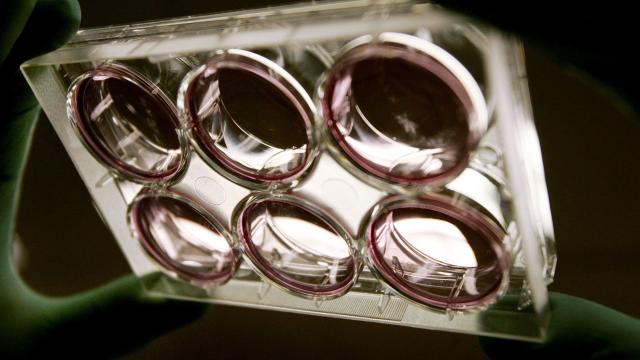A supposedly rare genetic quirk might be more common than we think, according to new research out Friday. The study, based largely on 23andMe data, suggests that one in every 2,000 people are born with two copies of a gene from only a single parent, often with no serious health consequences.
Ordinarily, a person’s egg or sperm cells have one set of the genes that make up their chromosomes (other cells in our body have two sets). When a sperm fertilises an egg, the resulting fertilised zygote will then have two sets of 23 chromosomes, one from each parent, making 46 chromosomes in total. If all goes well, the zygote multiplies and divides until it becomes a person, one with an even allocation of gene copies from both parents.
But a sex cell can occasionally have two copies of the same gene. And if that cell becomes part of a zygote, it’ll have more gene copies or even a whole chromosome more than it should, which often leads to an early death.
Sometimes, though, the cell can rescue itself by trimming off the third copy. And if that trimming cuts out the copy from the “normal” parental cell, you can be left with two copies of a gene from the same parent, a condition that’s known as uniparental disomy (UPD).
Documented cases of UPD are incredibly rare, with the first being discovered in the 1980s and only around 3,300 recorded in total worldwide. Many of these cases have involved people born with a wide array of genetic conditions linked to their UPD as well as an increased chance of cancer. Some researchers, based on these reports, have estimated that anywhere from one in 3,500 to one in 5,000 people in the world might have UPD.
But according to the authors behind this new study, which includes 23andMe’s in-house research team, the only surefire way to know how commonly UPD happens is to study the genes of lots of people at once. And that’s what they set out to do, combing through the de-identified genetic data of over 4.4 million 23andMe customers, as well as another database of nearly 500,000 UK residents.
Their research, published Friday in The American Journal of Human Genetics, uncovered 675 people with UPD across both groups. To figure out how often UPD occurs in the general population, they also looked at the rate of UPD specifically among trios of parents and children. They found 105 cases among 200,000 such groups in the 23andMe dataset, amounting to roughly one in every 2,000 births.
“So that’s about twice as common as was previously thought,” lead author Priyanka Nakka, a postdoctoral research fellow at Boston Children’s Hospital and former 23andMe intern, told Gizmodo.
As Nakka and her co-authors acknowledge, people who sign up for 23andMe research aren’t completely representative of the general population — they’re typically wealthier, healthier and whiter, for starters. Their methods for classifying whether someone has UPD aren’t foolproof either, and they didn’t work at all for isolated populations of people with relatively high levels of inbreeding in their past, such as Ashkenazi Jewish people. But given the large sample sizes involved here, the study does provide a much clearer picture of UPD than anything else to date.
For those worried, it’s worth pointing out that many, if not most, people with UPD seem to live perfectly healthy lives without ever knowing about their genetic quirk. In the study, the team didn’t find any significant association between people with UPD and known genetic diseases or conditions, even in extremely rare cases where people had an entire chromosome inherited from one parent. Extended to the current U.S. population of 327 million, that would roughly amount to around 160,000 blissfully unaware people living with UPD.
“We found that a little surprising,” Nakka said. “Because in the past, UPD is always been written about as this genetic phenomenon that can cause imprinting disorders or unmask deleterious mutations.”
Some genes in people are imprinted from one parent, meaning that only one copy is ever “turned on.” So if someone with UPD has two copies of a gene from their dad, but the gene is only supposed to be active from the mother’s side, both copies are effectively useless, which can obviously be very bad.
Other times, the two copies, if they’re completely identical, can unmask a harmful recessive mutation that wouldn’t have existed otherwise. But according to Nakka, there seem to be plenty of situations where having UPD along a certain gene or chromosome doesn’t cause either thing to happen.
That said, this research might help others better understand why UPD happens, how it can be harmful, and possibly even provide some insight into conditions not previously tied to UPD. The authors found evidence, for instance, that factors like having an older mother were linked to a higher risk of UPD. They also found some weak evidence that specific types of UPD in certain chromosomes could be linked to lower weight, shorter height, and autism spectrum disorder. These findings, the authors wrote, merit further research.
And more than anything, Nakka said, their research illustrates how much there is left to uncover about our biology and genes.
“As a biologist, I just think it’s interesting that there are all of these rules of biology, like mitosis and segregation, that we take for granted. But that actually, there might be all these exceptions to them,” she said.
